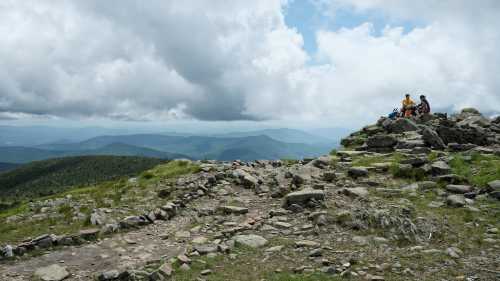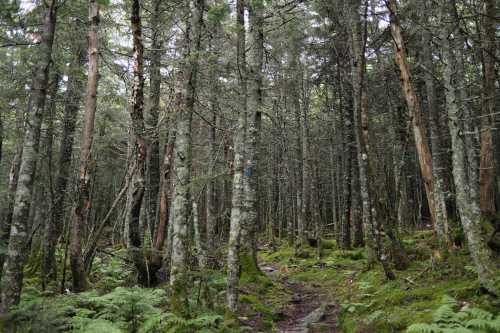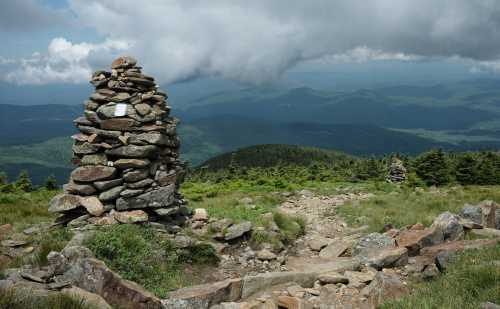Mount Washington is one of New Hampshire's most defining features. Standing tall above the state, virtually all of us have seen it, if not taken a trip up the Auto Road to see the views that come with a summit visit. But, have you ever considered hiking to the top? If you have, we commend you! It's one of the most dangerous hikes in the country, and most avid mountaineers and hikers recognize it as the most dangerous small mountain on the planet.
Mount Washington is one of the most beautiful attractions in the state and it's visited by more than 250,000 people from all over the world each year.
Many choose to enjoy the area by visiting the Glenn House, hiking towards Crystal Cascades, or just catching a view of the mountain from the Joe Dodge Lodge.
This popular mountain is a place of dark history, though. The 6,288-foot peak is one of the most deadly places in New Hampshire.
161 fatalities have been recorded on the mountain since it was first developed by European settlers, who saw the peak and were determined to turn it into a resort.
One reason for the high death toll - which is more than half of the deaths recorded on Everest - is the brutal summit weather. The summit sticks into the junction of two jet streams, and the highest winds recorded on Earth, 231 mph, were documented here in 1934.
Why is this mountain so brutal? It's a combination of geography, topography, and climatology that makes for a perfect storm of danger. Even in the summer, snow and cold temps are a constant threat.
There's an Auto Road to the summit, and drivers are warned of drastically changing conditions year-round.
Even if you do opt to take the road to the top, you can expect cold and fog on a lot of days. Even in the summer when conditions are beautiful at the bottom, you'll want to pack some cold-weather gear for your walk around the summit.
The unpredictable and unexpected weather at the summit is what makes this trek so deadly for inexperienced hikers who don't understand the mountain.
On paper, the hike is fairly easy - a steep, 4,000 ascent over 4 miles, and back down. However, when it's 70 degrees at the trailhead and 30 at the summit, hypothermia is a real threat.
A portion of the hike is above the treeline, which means that exposure to wind, snow squalls, blinding white-out conditions, pop-up lightning storms, or brutal sun can wreack havoc on an unprepared hiker, too.
A popular hiking route takes hikers north along the Crawford Ridge from Washington's summit. It's not uncommon for hikers to get blown off course here due to strong westerly winds.
Falls are a common cause of injury or death on the mountain, and the strong winds certainly contribute. The gusts can blow unstable hikers down from the ridge into the Great Gulf or the Dry River Valley.
During the winter, the summit is simply inaccessible to hikers without extreme danger. In fact, winter weather conditions exist at the summit for much of the year.
The weather station at the top is staffed year-round, and special snow vehicles take staff up and down, which is a treacherous journey itself.
Tales of death on Mount Washington are sadly too common to locals.
In 2006 four hikers began the hike to the summit around 1 p.m. Despite being warned that it was too late to safely make the ascent, they departed and were met with a 40-degree drop in temps. Three made it to the top and tried to get help for a third, who suffered such severe hypothermia he was left with severe brain damage. This is just one recent tale of a mountain emergency - if you're interested in reading more, the book Not Without Peril is a thorough introduction to the power of Mount Washington and the Presidental Range.
Mother nature is serious and the elements at elevations can be unpredictable. However, for a hiker who is prepared, nothing can quite top the adrenaline rush of summiting such a notorious mountain.
If Mount Washington is any indication, you never know what you're in for at the top. So, always tell people where you're going when leaving for a hike and take the proper safety precautions.
Then, enjoy the outdoors of New Hampshire to your heart's content.
There are a lot of ways to enjoy Mount Washington without the hike. You can learn more about the observatory at the top of Mount Washington here. To learn more about taking the Auto Road to the top, click here. And to learn about the White Mountains, take a look here.
Want to see the outdoor of the state without actually having to go all-in on Mount Washington? Here are 10 beautiful and scenic trails in New Hampshire that are perfect for beginners.
Subscribe to our newsletter
Get the latest updates and news
Thank you for subscribing!





















